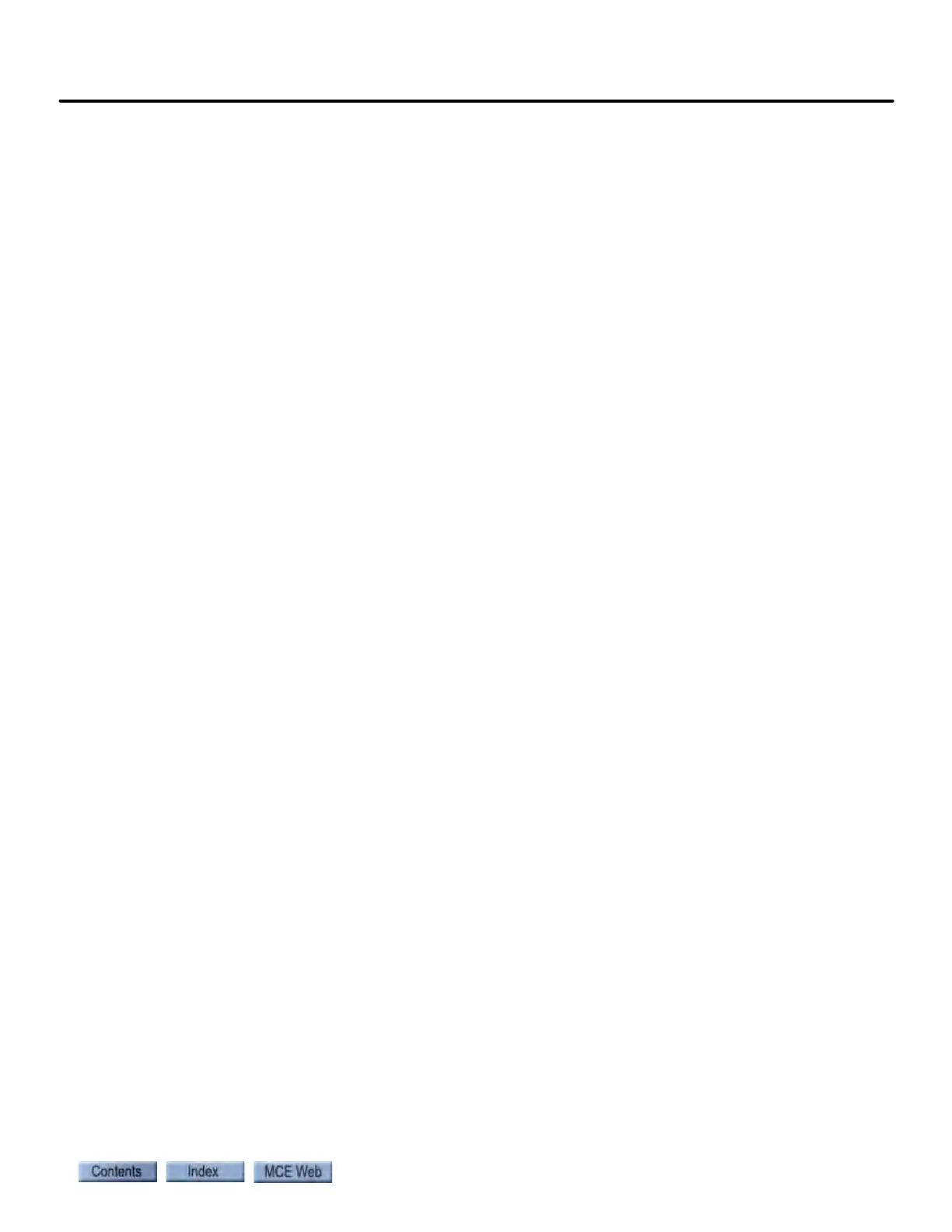Configuration - Drive
9-105
9
iControl DC
Armature Current Test Procedure: Among other things, the armature current test
feature provides a means to troubleshoot the current command signal path and SCR drive cur-
rent producing capability. During the test, up to 300% of rated current can be commanded to
the drive. To prevent the motor from rotating and the elevator from drifting, no voltage will be
applied to the motor field and brake during the test.
To perform the Armature Current Test:
1. Place the elevator on Machine Room Inspection.
2. Establish a communication link to the controller with iView.
3. On the Virtual Oscilloscope, select the Armature Composite Command and Armature
Current Signal test points.
4. A commanded current of 100% correlates to 3.0V on the Armature Composite Com-
mand test point (Virtual Oscilloscope), 2.4V on the Armature Current Signal test point
(Virtual Oscilloscope), 1.8V on TP3F (SCR-LGA board), and 3.0V on TP18 (SCR-LGA
board).
5. On the Controller > Configuration > Drive > Control tab, select Armature Test from the
Option group. Initially, select 15% as the requested current percentage from the Option
group. The 20% threshold enables certain current related faults.
6. Send the new configuration to the controller. When the configuration is accepted by the
controller, voltage will be removed from the motor field. The motor field and brake coil
voltages can be observed on the Operation Status screen.
7. Enable the Machine Room Inspection “Up” or “Down” command. While the “Up” or
“Down” command is active, the requested percentage of current will be commanded to
the drive. If “Up” command is selected, the “Armature Composite Command” will be
positive, the “Armature Current Signal” will be positive, TP3F will be positive, and TP18
will be negative. Likewise, if “Down” command is selected, the “Armature Composite
Command” will be negative, the “Armature Current Signal” will be negative, TP3F will
be negative, and TP18 will be positive.
8. The composite current command is composed of two analog signals sent to the drive. As
a result, a voltage at TP18 that is less than expected (half the expected value) could indi-
cate a problem with one of these paths. To verify, the voltage at JP3 (SCR-LGA board)
and the voltage across C199 should each be one half the expected value at TP18 (NOTE:
earlier versions of the IMP firmware applied the entire current command through the
path that can be monitored by JP3. As a result, for those versions, the voltage at JP3 will
be equal to TP18 and the voltage across C199 will be zero).
PID - Standard Speed loop parameters. Refer also to any optional gains that may be
enabled to determine how they might interact with Standard gain settings. Please refer to “Car
Response and Speed Loop Gain (System 12 SCR Drive)” on page 2-65.
• Proportional: Increase to provide faster response and tighter speed regulation. Excessive
values may result in oscillation and instability.
• Integral: Adjusts accumulated error between the Pattern and Tach/Encoder. Adjust after
Proportional parameter. Increase to reduce steady speed error and improve tracking.
Excessive values may result in oscillation, speed overshoot, and/or instability.
• Differential: Usually set to 0.0.
Adjust after adjusting Proportional and Integral parame-
ters. Differential is very sensitive. Even minor increases in value may impact a cars
approach to a floor.
